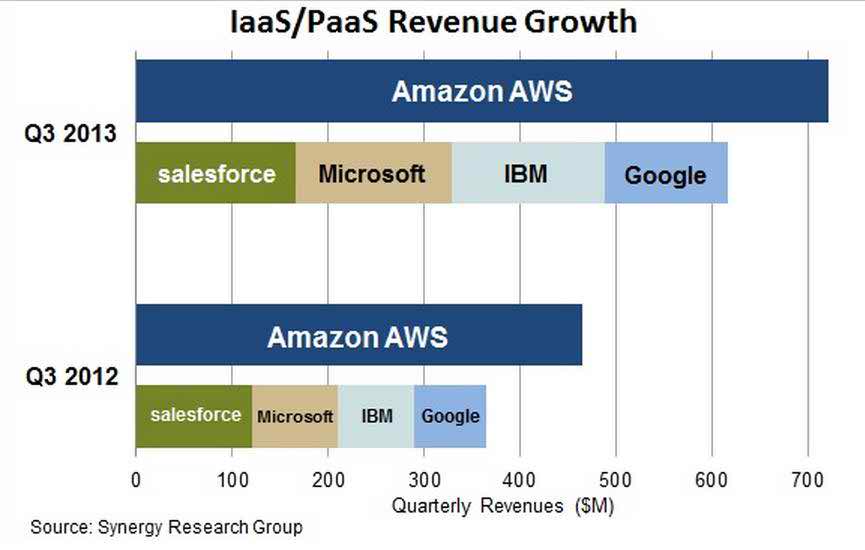How IBM Is Planning To Take On The Cloud

Things are not going very well at IBM. Last year, the company announced that sales were down for the sixth consecutive quarter. A major reason for this crisis is the dramatic change in consumer behavior as traditional IBM customers are moving away from the physical infrastructure on site at alternatives based on the cloud. The Armonk, NY company that sells over a quarter of all data servers in the world, however, was slowly but surely catching on to changing trends.
Over the past two years, IBM has invested heavily in the cloud market. Last year, the company announced the acquisition of SoftLayer, a company that provides a cloud-based dedicated hosting services to customers of $ 2 billion. With nearly 23,000 customers, SoftLayer provides IBM with the edge much more needed to compete with the likes of Amazon and Microsoft in the cloud hosting space. Last week, IBM also announced they were investing more than $ 1.2 billion on cloud infrastructures until 2014.
What foraying aggressive in the cloud mean for IBM and market infrastructure technology in general? According to IBM, the company made more than $ 1 billion in revenue from cloud-based products and services in Q3 2013.
The company expects to cross $ 7 billion in revenues clouds by 2015. However, according to third party metrics, IBM’s revenues could be much lower. A report released by the last year Synergy Research Group showed that despite the acquisition by IBM SoftLayer, the company is still far behind Amazon in terms of market share.
No matter where IBM is today with regard to its cloud services, what must be seen is what is meant by cloud impact of IBM strategy for the industry in general. As the company that obtained the most patents in the US for 21 years in succession, one of the most vital contributions to IBM’s technological innovation.
The company last year unveiled its patented technology InterCloud which should significantly reduce server downtime by interconnecting the resources of multiple cloud computing services across a common network that will ensure seamless delivery of services regardless of the availability of server.
How does this help? Take the example of Silanis, a leading electronic signature provider in North America which is used by customers in a number of very critical regulated industries. This is a service based on the cloud that is hosted on the Amazon AWS.
According to a report by the Committee of the International Working on Cloud Resilience (IWGCR) AWS has experienced nearly 24 hours of downtime in just 2009. The estimated loss due to what has been estimated at about 4.3 million $. For services such as Silanis, these cases can be very prohibitive. Therefore, using a InterCloud service Silanis can ensure that their service is backed up on multiple AWS cloud services and more. In this way, the electronic signature service can be made available to nearly 100% of the time.
The InterCloud solves a pain point and the main concern that customers have with regard to cloud-based services – that reliability. With a patent InterCloud, IBM can aggressively move forward on the integration of different cloud based services to market. This is a highly strategic move IBM could make money even if they are not the seller customers to sign.
The next three years are likely to be extremely interesting as we see IBM gain a greater foothold in the cloud market. IBM would be able to reproduce the dominance it once had in the market for physical servers? Only time will tell. But what we know is that the company is armored extremely well for this fight. What are your thoughts?